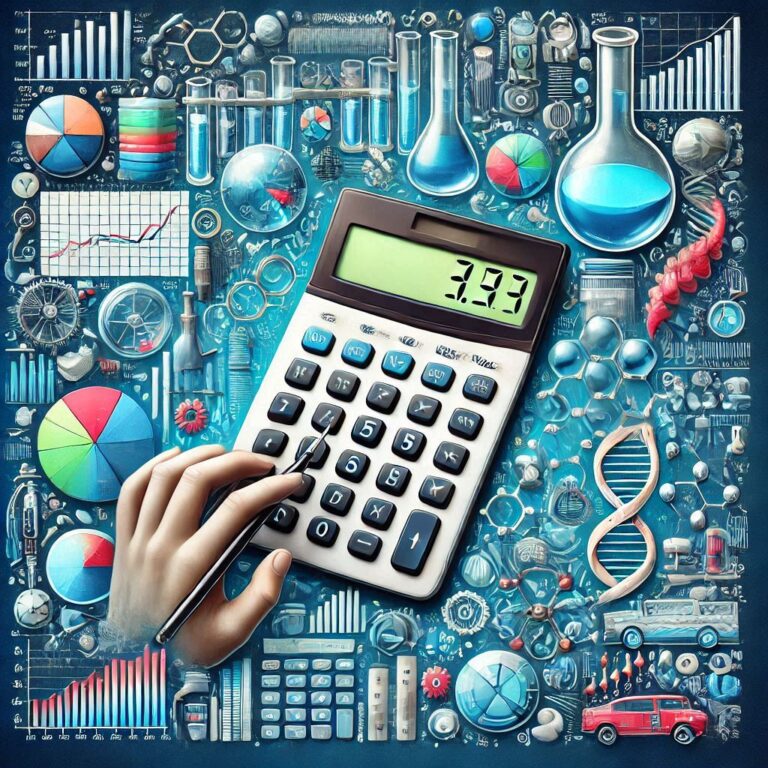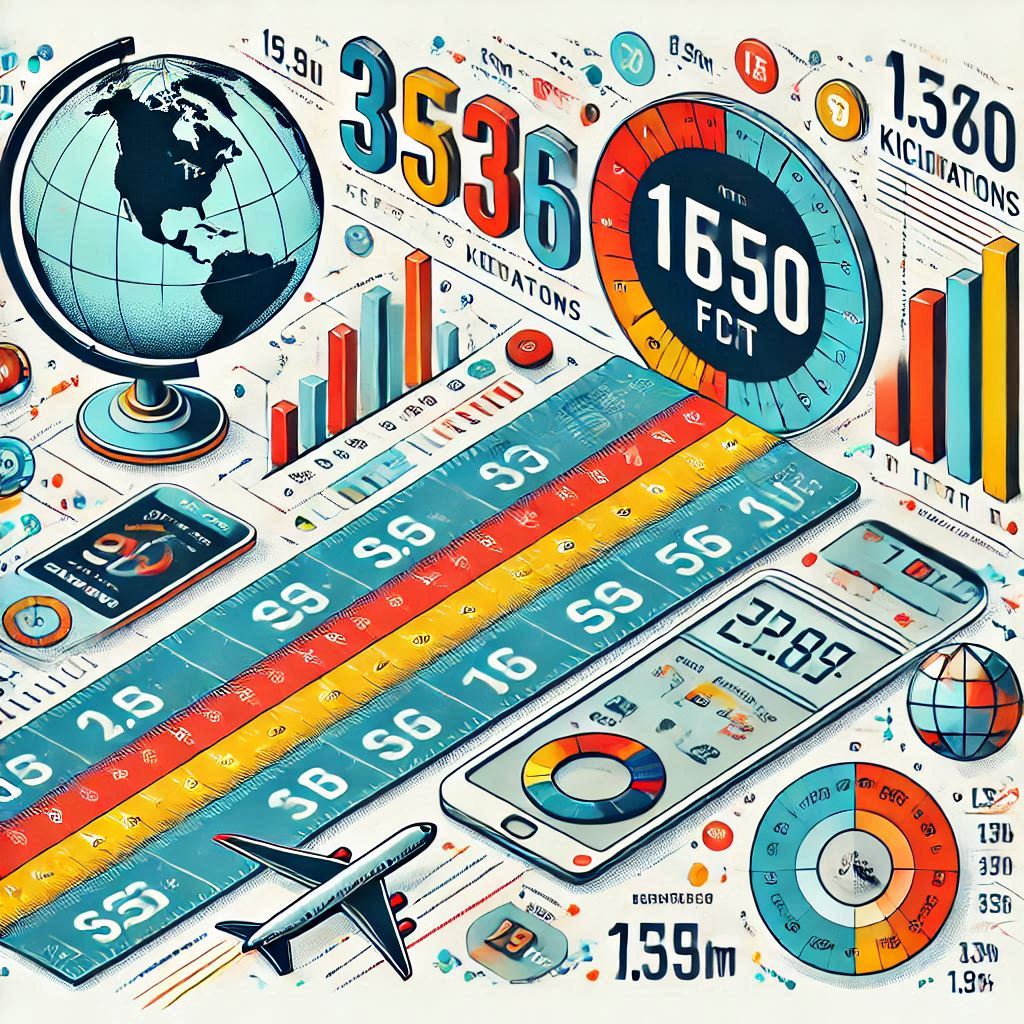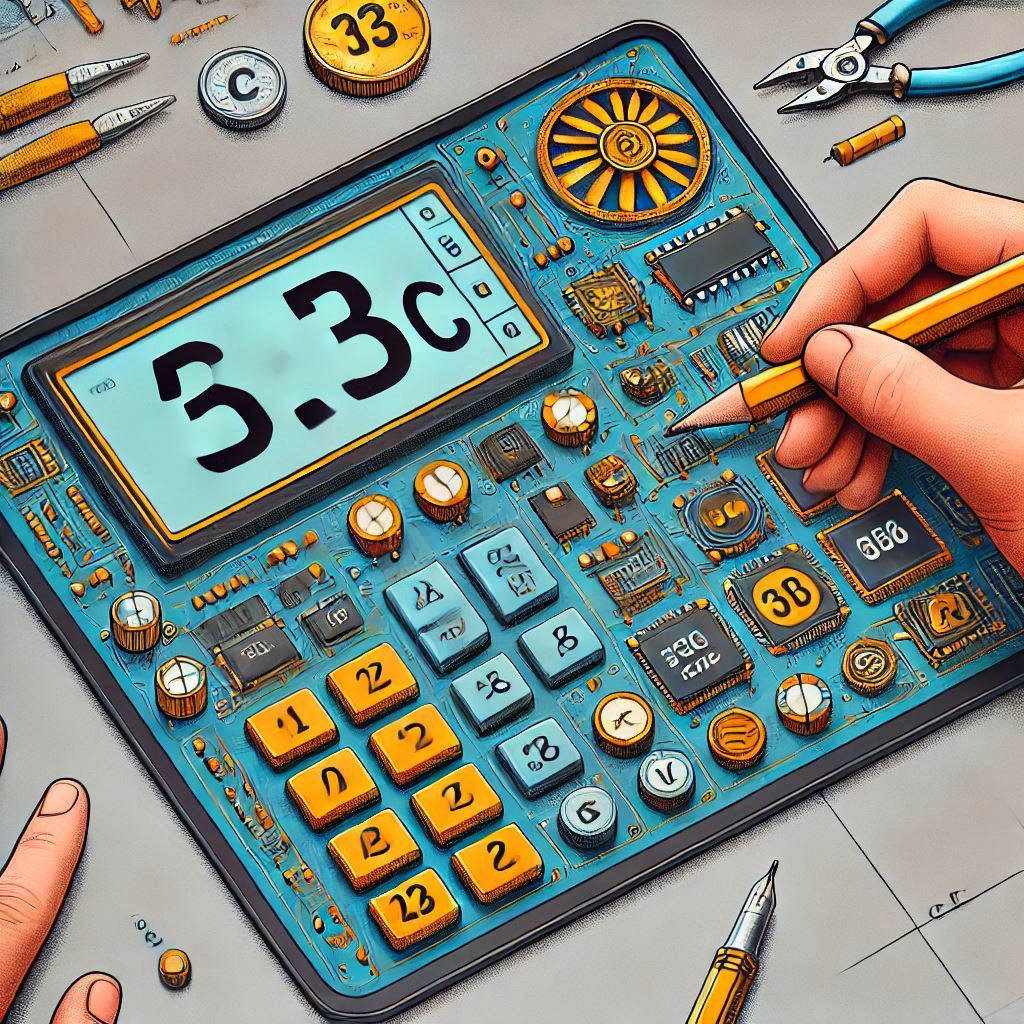PPB ↔ PPM Converter
Conversion History (PPB to PPM)
| PPB | PPM |
|---|
Conversion History (PPM to PPB)
| PPM | PPB |
|---|
Understanding PPM: Meaning, Conversions, and Applications in Everyday Science
Have you ever come across terms like “25 ppm” or “0.1 ppm to mg/L” and wondered what they really mean? Or perhaps you’re curious about how “ppm” is used in water quality, air measurements, or even in chemical analyses? In this comprehensive guide, we’ll dive deep into the world of PPM—its definition, significance, and a host of conversion techniques that turn confusing numbers into meaningful data. Whether you’re a student, a professional in environmental science, or just a curious mind, this blog will help you navigate the intricate details of PPM (parts per million) and its many applications.
Disclaimer: This article is for informational purposes only. All conversion formulas and data provided are for educational use. For precise measurements and professional applications, please consult relevant experts and updated technical resources.
Table of Contents
- What Does PPM Mean?
- Why PPM Is Important
- Fundamentals of PPM Conversions
- Converting Between Units: mg/L, mg/m³, and PPM
- Common PPM Values and Their Significance
- Detailed Conversion Examples and Calculations
- Special Cases and Additional Conversions
- Conversion Tables and Quick Reference Guides
- Frequently Asked Questions (FAQ)
- Conclusion: The Importance of Knowing Your PPM
1. What Does PPM Mean?
Defining PPM
PPM (Parts Per Million) is a unit of measurement used to describe the concentration of a substance in a solution or mixture. In simple terms, if you have a solution with 1 ppm of a solute, it means there is one part of that substance for every one million parts of the total mixture. For example, in water quality measurements, 1 ppm is typically equivalent to 1 milligram of a substance per liter of water (mg/L), assuming the density of water is approximately 1 kg/L.
- 1 ppm = 1 part per 1,000,000 parts.
- In water solutions, due to water’s density, 1 ppm ≈ 1 mg/L.
- PPM is often used to measure very low concentrations, such as pollutants, contaminants, or nutrients.
A Brief History of PPM
The use of PPM emerged from the need to express very small quantities in a clear and understandable way. Before modern analytical techniques, scientists required a standardized unit to express trace amounts, particularly in environmental and chemical analyses. Today, PPM is a universally accepted measurement, critical in fields such as environmental monitoring, industrial quality control, and health sciences.
2. Why PPM Is Important
Applications in Water Quality
In water quality analysis:
- Water PPM: It measures contaminants like heavy metals, pesticides, and other impurities.
- mg/L to PPM: Since 1 mg/L is equivalent to 1 ppm in water, this conversion is straightforward and widely used.
- Example: If your water sample contains 25 mg of a contaminant per liter, it is often reported as 25 ppm.
Monitoring water PPM is critical for ensuring safe drinking water, regulating industrial discharge, and assessing environmental pollution levels.
Applications in Air Quality
Air quality is often expressed in terms of ppm:
- Air PPM: Measures pollutants such as carbon monoxide (CO), sulfur dioxide (SO₂), and hydrogen sulfide (H₂S).
- Low levels (e.g., 0.1 ppm, 0.2 ppm, 0.3 ppm) are crucial for determining whether the air is safe to breathe.
- Converting air pollutant concentrations from ppm to mg/m³ may require additional calculations using the molecular weight of the pollutant and ambient conditions.
Other Common Uses
Beyond water and air, PPM is also used in:
- Soil Testing: Trace amounts of nutrients or contaminants are often measured in ppm.
- Food Industry: Certain additives or contaminants in food are regulated at ppm levels.
- Industrial Processes: Quality control in manufacturing often relies on ppm to monitor impurities or additive concentrations.
3. Fundamentals of PPM Conversions
Understanding the Basic Ratio
When we say a solution has 1 ppm of a substance, it means:
- There is 1 unit (by mass, volume, or number) of the substance for every 1,000,000 units of the total mixture.
- For liquids like water, this typically means 1 mg of the substance per liter of water (since 1 L of water has a mass of approximately 1,000,000 mg).
Key Conversion Equivalencies
- 1 mg/L = 1 ppm (in water)
- 1 ppm = 1 mg/kg (in solids, assuming similar density to water)
- 1% = 10,000 ppm (thus, 10 ppm = 0.001%, 100 ppm = 0.01%, etc.)
For gases in air, conversions between ppm and mg/m³ depend on temperature, pressure, and molecular weight.
4. Converting Between Units: mg/L, mg/m³, and PPM
Water: mg/L to PPM and Vice Versa
In water, because the density is approximately 1 g/mL, the conversion is straightforward:
- 1 mg/L = 1 ppm
- Converting mg/L to ppm: Simply use a 1:1 conversion.
- Example: If a water sample has 100 mg/L of a substance, it can be stated as 100 ppm.
Air: PPM to mg/m³
Air measurements require a bit more calculation since air density is much lower than water and depends on environmental conditions.
- Determine the molecular weight (MW) of the gas.
- Use the formula:
mg/m³ = ppm × (MW / 24.45)
Example: For a gas with a molecular weight of 44 g/mol (like CO₂), 1 ppm ≈ 1 × (44 / 24.45) ≈ 1.8 mg/m³.
Other Useful Conversions
- mg per liter to ppm: Directly equivalent in water.
- ppm to mg/L: Use the 1:1 equivalence in water.
- 0.1 mg/L to ppm: Equals 0.1 ppm.
- Converting 1 mg/mL to ppm: Since 1 mg/mL equals 1000 mg/L, it is equivalent to 1000 ppm.
- Percent to ppm: 1% = 10,000 ppm, so to convert, ppm = Percent × 10,000. For instance, 10 ppm = 0.001% (because 10/10,000 = 0.001).
5. Common PPM Values and Their Significance
Low-Level Measurements: 0.01, 0.05, 0.1, 0.5, and 0.6 ppm
- 0.01 ppm: Often used in highly sensitive applications where only trace amounts of a substance are present, such as detecting trace contaminants in ultra-pure water.
- 0.05 ppm: Frequently cited in air quality standards or water quality regulations. In water, 0.05 mg/L equals 0.05 ppm.
- 0.1 ppm: A common measurement for pollutants. In water, 0.1 mg/L is equivalent to 0.1 ppm. In air, 0.1 ppm can be converted to mg/m³ using the formula provided above.
- 0.5 ppm and 0.6 ppm: Typical in environmental monitoring where slightly higher concentrations are measured. They represent very low concentrations, critical in toxicological studies.
Moderate to High Concentrations: 15, 25, 100, and 150 ppm
- 15 ppm: Often seen in air quality standards or when measuring specific contaminants in water, for example, some industrial discharges or natural mineral levels in water.
- 25 ppm: May appear in both water and air quality analyses. A water sample showing 25 mg/L of a dissolved ion is reported as 25 ppm.
- 100 ppm: A round number frequently encountered in both laboratory settings and field measurements. In water, 100 mg/L equals 100 ppm; in air quality, 100 ppm is significant in environmental standards.
- 150 ppm: Seen in industrial processes or regulation of certain contaminants in water and soil. In water, 150 mg/L equals 150 ppm.
Very High Concentrations: 1000, 10,000, 100,000, and 1,000,000 ppm
- 1000 ppm: Often expressed when the solute concentration is high. In water, 1000 mg/L equals 1000 ppm.
- 10,000 ppm: Equivalent to 1% concentration, since 10,000 ppm = 1%.
- 100,000 ppm: Equates to 10% concentration.
- 1,000,000 ppm: Represents 100% concentration, meaning the solute makes up the entire mixture.
6. Detailed Conversion Examples and Calculations
Example 1: Converting mg/L to PPM
Scenario: A water sample contains 100 mg of a contaminant per liter.
Calculation: Since 1 mg/L = 1 ppm in water:
100 mg/L = 100 ppm
Example 2: Converting 0.1 ppm to mg/L
Scenario: A water quality test shows a pollutant concentration of 0.1 ppm.
Calculation: Using the equivalence for water:
0.1 ppm = 0.1 mg/L
Example 3: Converting 0.1 ppm to mg/m³ (Air)
Scenario: Convert 0.1 ppm of a gas (with a molecular weight of 44 g/mol, like CO₂) to mg/m³.
Calculation: Use the formula:
mg/m³ = ppm × (MW / 24.45) For CO₂: mg/m³ = 0.1 × (44 / 24.45) ≈ 0.18 mg/m³
Example 4: Converting Percentages to PPM and Vice Versa
Scenario: Convert 10 ppm to a percentage.
Calculation: Since 1% = 10,000 ppm:
10 ppm = (10 / 10,000) × 100% = 0.1%
Conversely, converting 0.05% to ppm:
0.05% = 0.05 × 10,000 = 500 ppm
7. Special Cases and Additional Conversions
Electrical Conductivity: 1 Microsiemens to PPM
Electrical conductivity (EC) is sometimes converted to ppm in water quality testing. A common rule of thumb for potable water is:
1 µS/cm ≈ 0.5 to 0.7 ppm (conversion factor may vary based on ionic composition)
Gas Measurements: 1 H₂S in PPM
When measuring gases like hydrogen sulfide (H₂S) in air:
- 1 ppm of H₂S indicates one molecule of H₂S per one million molecules of air.
- This measurement is critical for ensuring occupational safety in industries like oil and gas.
Volume Conversions: 1 mg/mL to PPM and 1 ppm to mL
- 1 mg/mL to PPM: Since 1 mg/mL equals 1000 mg/L, it is equivalent to 1000 ppm.
- 1 ppm to mL: This conversion isn’t typically direct because ppm is a ratio rather than a volume measurement, but understanding that ppm is used alongside mg/L can help bridge volume and mass concepts.
8. Conversion Tables and Quick Reference Guides
Table 1: Water-Based Conversions
| Measurement | Conversion | Example |
|---|---|---|
| mg/L to PPM | 1 mg/L = 1 ppm | 25 mg/L = 25 ppm |
| PPM to mg/L | 1 ppm = 1 mg/L | 100 ppm = 100 mg/L |
| 1 mg/mL | 1 mg/mL = 1000 mg/L = 1000 ppm | 1 mg/mL = 1000 ppm |
Table 2: Percentage to PPM
| Percentage | PPM Equivalent |
|---|---|
| 0.001% | 10 ppm |
| 0.01% | 100 ppm |
| 0.1% | 1000 ppm |
| 1% | 10,000 ppm |
Table 3: Air-Based Conversion (Example for CO₂, MW = 44 g/mol)
| PPM (CO₂) | mg/m³ |
|---|---|
| 0.1 ppm | ≈ 0.18 mg/m³ |
| 1 ppm | ≈ 1.8 mg/m³ |
| 10 ppm | ≈ 18 mg/m³ |
9. Frequently Asked Questions (FAQ)
Q1: What is PPM and why is it used?
A: PPM stands for parts per million, a unit that represents the ratio of one part of a substance per one million parts of the total mixture. It is widely used in environmental science, chemistry, and industry to denote very small concentrations.
Q2: How do I convert mg/L to ppm in water?
A: Because the density of water is approximately 1 kg/L, 1 mg/L is equivalent to 1 ppm.
Q3: What does “25 ppm” mean?
A: “25 ppm” indicates that there are 25 parts of a substance per one million parts of the mixture. In water, it typically means 25 mg of the substance per liter of water.
Q4: How do I convert 0.1 ppm to mg/L?
A: In water, 0.1 ppm is directly equal to 0.1 mg/L.
Q5: How do I convert 10 ppm to percent?
A: Since 1% = 10,000 ppm, then:
10 ppm = (10 / 10,000) × 100% = 0.1%
Q6: What is the significance of values like 0.01, 0.05, 0.1, 0.5, and 0.6 ppm?
A: These low ppm values are typically encountered in trace analysis. They indicate extremely small amounts of a substance, which can be critical in environmental monitoring or when dealing with hazardous contaminants.
Q7: How do I convert 1 mg/mL to ppm?
A: Since 1 mg/mL equals 1000 mg/L in water, and 1 mg/L = 1 ppm, therefore 1 mg/mL = 1000 ppm.
Q8: What is the conversion for 0.1 ppm to mg/m³ in air?
A: For a gas with a known molecular weight, use the formula:
mg/m³ = ppm × (Molecular Weight / 24.45) For example, for CO₂ (MW = 44 g/mol), 0.1 ppm ≈ 0.18 mg/m³
Q9: How are extremely high ppm values interpreted, such as 100,000 or 1,000,000 ppm?
A: 100,000 ppm is equivalent to 10% concentration, while 1,000,000 ppm represents 100% concentration, meaning the substance is pure.
Q10: What does “1 ppm is equal to 1 mg/L” mean?
A: In water, due to its density, 1 ppm of a solute is equal to 1 mg/L. This is a direct and useful conversion in water quality assessments.
10. Conclusion: The Importance of Knowing Your PPM
Understanding ppm is essential across multiple disciplines—from environmental monitoring to industrial quality control and even in everyday scenarios like ensuring the safety of your drinking water. Whether you are converting 0.1 ppm to mg/L, figuring out what 25 ppm signifies, or translating measurements into percent values, mastering these conversions empowers you to make informed decisions based on quantitative data.
To summarize:
- PPM (parts per million) is a ratio that indicates how many parts of a substance exist in one million parts of a solution or mixture.
- In water, due to its density, 1 mg/L is directly equivalent to 1 ppm.
- In air and other gases, conversions require additional steps involving molecular weight and environmental conditions.
- Conversion factors like 1% = 10,000 ppm help in translating between different units.
- Practical applications include water quality testing, air pollution monitoring, soil analysis, and more.
By familiarizing yourself with these conversion techniques and understanding the significance of various ppm values—from trace amounts like 0.01 or 0.05 ppm to larger concentrations like 1000 or 10,000 ppm—you’ll be better equipped to analyze and interpret data in your field. Whether you’re dealing with water ppm measurements, converting mg per liter to ppm, or interpreting readings like 0.1 mg/mL to ppm, having these tools at your fingertips is invaluable.
Remember, while ppm is a powerful metric, always consider the context in which it is used. Factors such as temperature, pressure, and the properties of the substances involved can affect the accuracy and relevance of your conversions. Always consult updated technical resources or professionals when precise measurements are critical.
We hope this comprehensive guide has clarified what ppm means, how to perform various conversions, and why these measurements are so important in everyday science. Whether you’re a student, researcher, or industry professional, understanding ppm is a foundational skill that will enhance your ability to communicate and interpret scientific data effectively.
Thank you for reading our deep dive into the world of PPM. We invite you to share your thoughts, ask questions, or provide additional examples in the comments below. Stay curious, keep learning, and remember that sometimes the smallest numbers (like those in ppm) can have the biggest impact on our world!
Additional Resources & References:
- Textbook References: Look for chapters on concentration and dilution in analytical chemistry textbooks.
- Online Tools: Various online calculators can convert mg/L, mg/m³, and ppm for different substances.
- Scientific Journals: For advanced topics, refer to journals in environmental science and industrial chemistry for the latest research on trace measurements and conversions.
Happy Converting!
In environmental science, chemistry, and related fields, accurate measurement and interpretation of data are critical. The terms PPB (Parts Per Billion) and PPM (Parts Per Million) are often used to describe concentrations of substances. Converting between these units manually can be time-consuming and prone to errors.
To simplify this process, our PPB to PPM Conversion Calculator provides instant, accurate results. In this blog post, we’ll explore its uses, importance, and address the most frequently asked questions (FAQs) to help you understand how this tool can benefit you.
What is a PPB to PPM Conversion Calculator?
A PPB to PPM Conversion Calculator is a tool that converts concentrations expressed in parts per billion (PPB) to parts per million (PPM) using a simple formula:
PPM = PPB/1000
This tool eliminates the need for manual calculations, saving time and ensuring precision, making it invaluable for professionals in scientific, environmental, and industrial fields.
Uses of the PPB to PPM Conversion Calculator
Environmental Science:
- Analyze air, water, and soil contamination levels by converting PPB measurements into PPM for better interpretation.
Chemical Industry:
- Evaluate chemical concentrations in production processes or quality control systems.
Pharmaceuticals:
- Monitor trace amounts of impurities or active ingredients in drugs and other formulations.
Research and Academia:
- Provide students, researchers, and educators with a quick, reliable way to perform unit conversions in experiments and studies.
Food and Beverage Industry:
- Assess trace elements and contaminants in food products for regulatory compliance.
Importance of the PPB to PPM Conversion Calculator
Time-Saving:
Manual calculations of PPB to PPM require precision, especially when dealing with large datasets. The calculator automates this process instantly.Eliminates Errors:
Miscalculations in scientific and industrial settings can lead to incorrect conclusions or unsafe outcomes. This tool ensures accuracy every time.Enhances Productivity:
Researchers and professionals can focus on analyzing data rather than performing repetitive conversions.Easy to Use:
The calculator is designed with simplicity in mind, making it accessible for both experts and beginners.Mobile-Friendly Design:
Our responsive calculator works seamlessly on desktops, tablets, and smartphones, allowing you to perform conversions anywhere, anytime.
How to Use the PPB to PPM Conversion Calculator
Input the PPB Value:
Enter the concentration in parts per billion (PPB) into the input field.Click the “Convert” Button:
The calculator instantly converts the entered value into parts per million (PPM).View the Result:
The converted PPM value is displayed in the result field for immediate use.Reset if Needed:
Use the “Reset” button to clear all fields and perform a new conversion.
FAQs About the PPB to PPM Conversion Calculator
Q1: What does PPB and PPM mean?
- PPB (Parts Per Billion): A unit of measurement for extremely low concentrations, often used in environmental science.
- PPM (Parts Per Million): A unit for slightly higher concentrations, commonly used in chemistry and industrial processes.
Q2: How does the calculator work?
The calculator uses the formula PPM = PPB/1000 to instantly convert PPB values into PPM.
Q3: Who can benefit from this calculator?
This tool is ideal for scientists, researchers, students, engineers, and professionals in industries like environmental science, chemistry, pharmaceuticals, and food safety.
Q4: Does it handle large values?
Yes, the calculator is designed to accurately handle both small and large PPB values.
Q5: Can I use this tool offline?
The calculator is currently web-based and requires an internet connection. However, it can be integrated into your local system for offline use.
Q6: Is the tool mobile-friendly?
Yes, the calculator is fully responsive and works seamlessly on all devices, including smartphones and tablets.
Example Conversion
Let’s convert a PPB value to PPM:
- Input the PPB value:
2500. - Use the formula: PPM = PPB/1000
- Calculation: PPM = 2500/1000 = 2.5
- The PPM result is
2.5.
Features of the PPB to PPM Conversion Calculator
Instant Results:
Get precise conversions in real-time with just a click.User-Friendly Interface:
Simple design ensures ease of use for beginners and professionals alike.Reset Button:
Quickly clear all fields to perform new calculations.Error Validation:
Alerts users if the input is invalid (e.g., non-numeric values).Responsive Design:
Works flawlessly across all devices for on-the-go use.
Conclusion
The PPB to PPM Conversion Calculator is an essential tool for anyone dealing with trace measurements in environmental science, chemistry, or industrial applications. It simplifies conversions, saves time, and ensures accuracy—making it a valuable asset for professionals and students alike.






